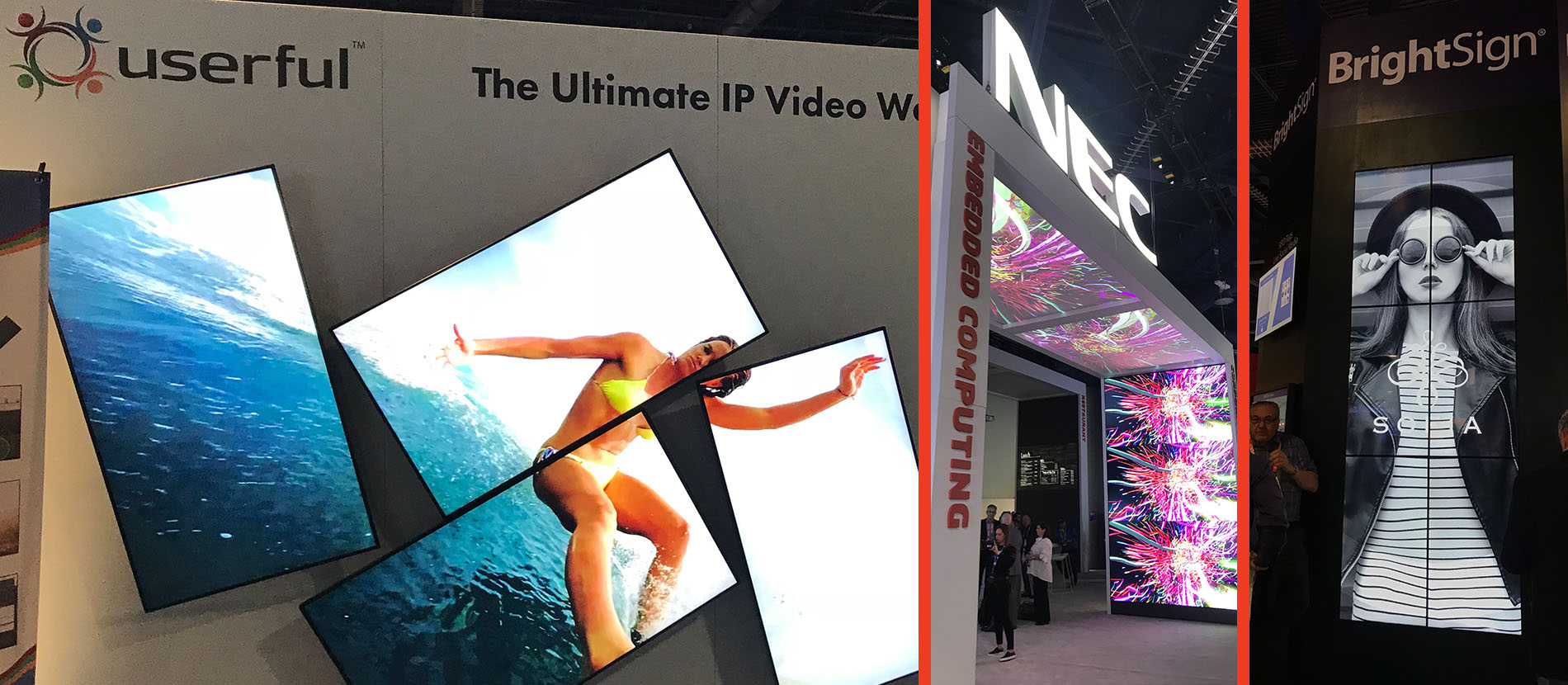Comparing Types of Video Walls

If you’re interested in designing a video wall, you are taking an awesome step toward boosting your marketing game this year. Video walls are a fun and dynamic way to engage an audience and share information in an easily accessible format. They are transforming the way people communicate, learn and advertise around the world. They also come in a variety of different display types and each one has its own advantages. Here is a closer look at some of the different types of video walls you can choose from for your display.
Types of Video Walls
Because video walls have gotten so popular in the past few years, there is a wide selection of options to choose from. Each one is unique and offers its own advantages and disadvantages.
LCD Video Walls
LCD is one of the most popular displays because it’s very versatile and people are already familiar with it from using computer monitors and televisions. LCD panels can provide some of the highest total resolutions of any technology available and can offer extremely wide viewing angles. It can produce sharply detailed images that make it easy to read text and see visuals without any eye fatigue. They can also offer high brightness which makes them great for ambient light environments.
Projection Cube Video Walls
Projection cubes are a popular variety of video wall technology that consist of a projection system housed in a sealed cube. Visually, they have a near-seamless appearance and the total resolution can be relatively high. They also have excellent color uniformity and brightness, so they make a great option for many different light levels. However, they aren’t ideal for when you need a wide viewing area because viewers located at wider angles will experience light fall-off.
Blended Projection
Blended projection video walls combine two or more projectors to create an image that is bigger or higher-resolution than a single projector could make. You can project them on a wide variety of surfaces which makes them super versatile. They also offer absolute seamlessness, which can make for really striking visual displays. They produce a much higher resolution than single projector systems but not as high as LCD or projection cubes. The sharpness and brightness depend on a number of factors such as the size of the projector, the light source and the screen type.
LED Video Walls
LED has long been used in big outdoor billboards and small indoor signage, but direct view LED displays serve as visual displays on their own and not just light sources. These are very bright but don’t provide great resolution, which means they are good for brightly lit areas and visuals that won’t be viewed up close.
When you’re ready to start designing your video wall, book a time with us! We can provide all the high-quality animated designs you need for the display type you choose.
